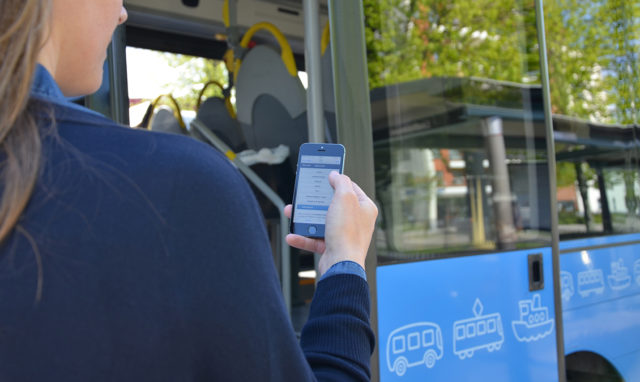
Creating the Best Public-Private Mobility as a Service Mix
novembre 8, 2016 — Uncategorized
When we ran the first fully integrated Mobility-as-a-Service pilot three years ago, it wasn’t called MaaS yet. Nevertheless, 70 households paid UbiGo to take care of their everyday travel. They were so happy with the service that they wanted it to continue and, yes, their personal car use significantly decreased as a result.

But could our test drive at MaaS have been a little too early? Not in terms of technology nor in terms of customer readiness. It’s easier to find early adopters among everyday people than find support from transport service providers, public transit agencies in particular.
Reducing car ownership is a core aspect of making cities more sustainable. Consuming mobility services instead of owning a vehicle leads to a behavioural change as the lock-in effects of investments and other fixed costs disappear. But in order for customers to relinquish ownership, the service, or the combination of services, needs to be seamlessly flexible, reliable and easy to use. On-demand mobility needs to be as easy as having the key to your own car in your pocket – but without the drawbacks.
The promise and commitment towards the customers (and suppliers) has to be big. Multimodality in itself isn’t a great offer, as many city planners like to think, nor is using travel planners as exciting as many IT-people think. As opposed vacations, everyday travel is not a hobby.
Attracting the Private Sector
The importance of viable business models is not fully understood in the public sector. It really doesn’t matter if people and city administrators like a service if they cannot support a sustainable business. The answer to the MaaS model lies in value creation. Simply providing a travel planner cannot be the only trick, nor will offering a single interface for ticketing and booking. Also service providers and other stakeholders must see benefits in order to be part of the offer. Can they reach new customer segments? Can they make better use of their resources?
It is also important to understand that a business model is connected to the organisation that owns it. The possible offers, revenues streams, relationships, partnerships and agility all depend on who runs the service, as do the effects on the transport system. Will MaaS make it easier for public transit customers to use a car or for car owners to use more public transport?

A Pivotal Role for the Public Sector
This leads us back to the roles of the public sector, in particular cities that dictate the use of infrastructure and public space and transit agencies that control the backbone of mobility.
This is a “must-have” for potential MaaS-operators and their service providers. For public actors this is a monopoly that should be used to make sure mobility solutions not only fulfill citizens needs, but the city as a whole. For instance, a public transit agency can set a hard, but wide framework for the reselling and repackaging of public transport. A city can also use dynamic road charging in dense areas, something that will be crucial if cheap, self-driving taxis start to rapidly win over public transport consumers.
While some public transit agencies are just waking up, other actors are eager to put new mobility services in play, so much so that they think they need to be in charge. Both strategies can lead to public transport losing its pivotal role. The first case might be obvious – a MaaS-service without good and cost-effective public transport will not be competitive. Car ownership will remain high and next generation vehicles will be privately owned cars with autopilots and autonomous Ubers leaving public transport out of the equation (for most trips).
On the other hand, viewing MaaS as part of public transport, with transit agencies operating or defining the service or the platform, will equally lead to a less competitive service.
MaaS Needs Mass-transit
Any successful MaaS-operator needs transport service providers focused on their core business to compete with car ownership. Public transit agencies should focus on effective and attractive mass transit to and within cities. That is where their competitive edge truly lies, as mass transit allows public transportation to relieve cities from congestion, noise, accidents and wasted space, to residents’ benefit. This is an enormous challenge in and of itself.
The International Transport Forum (ITF) simulation of a fleet of shared taxis or minibuses replacing all private cars and all public transport except the metro in Lisbon, showed a 97 per cent decrease in the number of vehicles needed. But what happens if people don’t want to get out of their cosy taxi at the metro station for the last leg on a beaten, delayed train to the city centre?